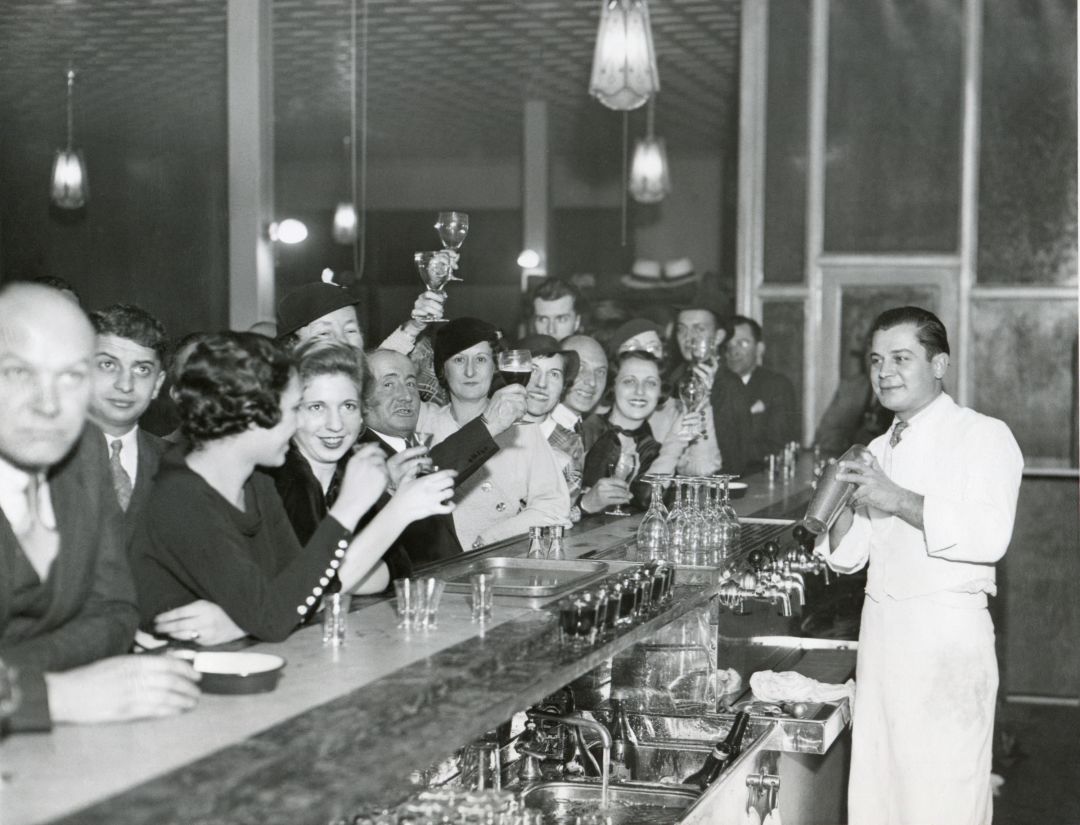Are We on the Verge of a New Crackdown on Alcohol Consumption?

The scene at a Philadelphia bar after the end of Prohibition in 1933.
Image: Courtesy Photo
Over the past decade, it seems as if an increasing number of individuals and organizations have been decrying the use of alcohol.
Some have been quite legitimate, such as Mothers Against Drunk Driving, but most were on the periphery, with a vague agenda and few credentials. However, I became more concerned when, on April 10, the surgeon general of the United States, Jerome Adams, stated that “all Americans" should "avoid" alcohol. This alarmist comment is the latest in a body of thought espoused by the research and medical community, in what seems to me, to be suggesting a new Prohibition.
As the COVID-19 pandemic began spreading, the governor of Pennsylvania, without explanation, shut down all state-controlled liquor stores. The few private wine stores in that state saw sales skyrocket until their supply line became disrupted. As a result of Pennsylvanians crossing state borders to acquire alcohol, the governor of Ohio shut down its border liquor stores.
This is not just a domestic problem, as evidenced by South Africa not only curtailing domestic alcohol sales, but wine exports, as well. While drastic measures may be necessary to combat the coronavirus, these are extraordinary and indicate that politicians may now be buying into a new Prohibition movement.
The original Prohibition, the 18th amendment to the Constitution, created a ban on the manufacture and sale of alcoholic beverages, which was unique to the United States. It began in 1919 and ended in 1933. There were just reasons for it, including binge drinking on campus (sound familiar?) and workers depriving their families of income by drinking and gambling. However, the experiment failed because people preferred to flaunt the law and speakeasies became attractive and cool.
The introduction of unsafe alcohol and greater crime also hastened Prohibition’s demise. Wineries were not spared, but since home winemaking was not illegal, creative wineries sold grapes to be shipped for home winemakers. Some enterprising wineries sold kits with grapes and yeast to make your own wine.
Now, 101 years later, it’s seems like déjà vu. An oft-quoted source for the new Prohibition is an article in the prestigious medical journal Lancet with the heading, “No level of alcohol consumption improves health.” The researchers studied alcohol consumption in 195 countries, and opined that alcohol is the sixth leading cause of death worldwide and should be eliminated. They state the obvious that alcohol abuse is a big problem in Russia, but fail to explain the relevance to us. The authors recommend heavy taxation, limits on marketing and restrictions on availability.
This mindset is now prevalent in the medical community, as stated by the surgeon general. For example, when you're completing the documents needed for a physical with a doctor, information about your alcohol use is requested. Most physicians now recommend limiting alcohol consumption to one glass per day for women and two for men, and there is no distinction between wine, beer or spirits. Fortunately, the glass size is not stipulated.
While there is no question that alcohol abuse exists, and is a blight on our society, wine is a beverage that relaxes, has medical benefits and allows us to cope better with the pandemic restrictions. Hopefully, we can keep it that way.
Bob McGinn has spent his entire career in the wine industry—forming wine clubs, working in wine sales marketing and engaging in all facets of the winemaking process, including vine management, fermentation and yeast analysis. He has developed wine programs for companies such as Marriott, Sheraton and Smith & Wollensky, and consults with local restaurants. You can read more of McGinn’s work at gulfcoastwinejournal.com.